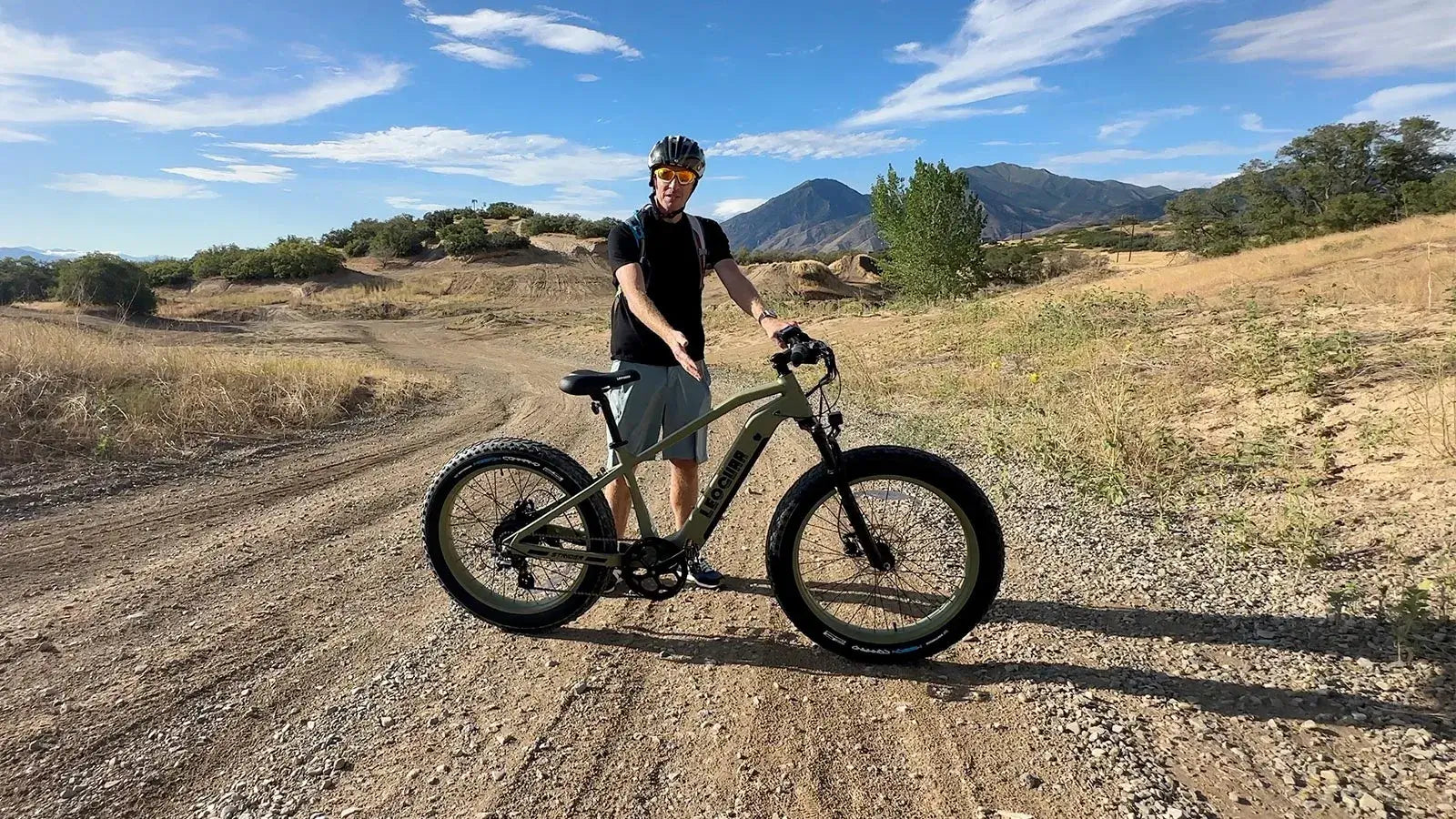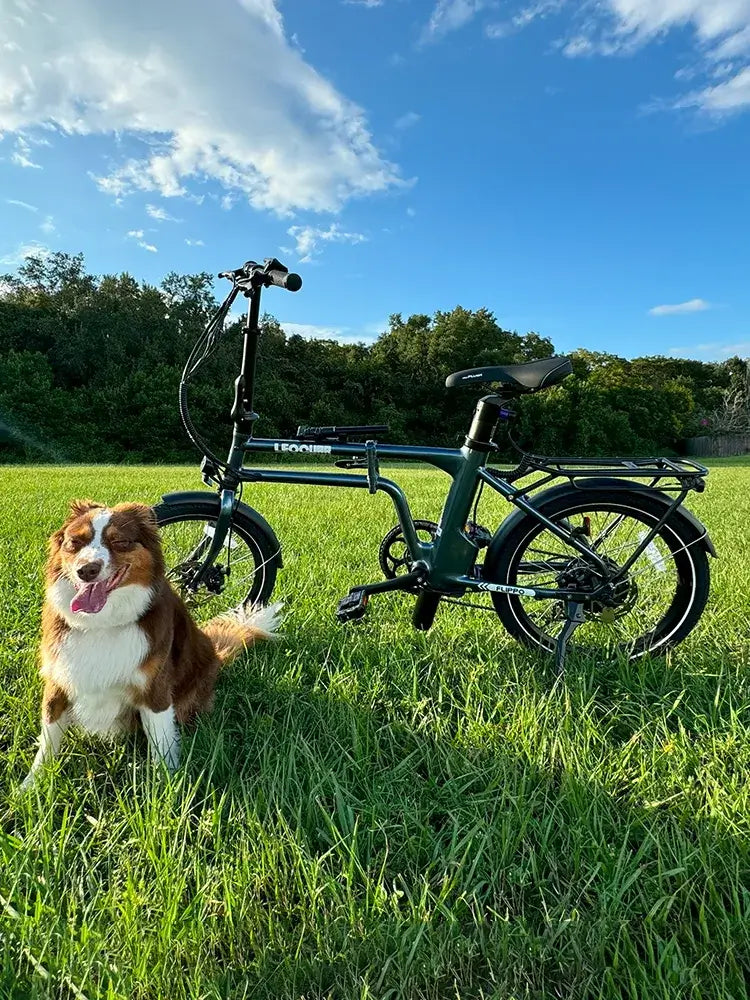
How Accurate Are Weight Capacity Limits for Electric Bikes?
You just got your new e-bike out of the box. As you look at the frame, you see a small sticker that says "Max Load: 275 lbs." Right away, you start wondering about this number. Is it a rule you can never break? What happens if you and your stuff weigh a little more than that? Could something bad happen on your first ride?
Let's talk about this right now. The e bicycle weight limit from the company is a safe number, not the exact point where things break. It means every part of the bike can handle that weight safely many times under different conditions.
But thinking this number doesn't matter is risky for your bike and your safety. This article will help you understand what's behind these numbers. We'll look at how companies figure out these limits, what counts toward the total weight, what really happens when you go over, and what you can do if you're close to your bike's limit.

Understanding Total Payload
Before we go further, you need to know what the e bicycle weight limit really means. People often think this number is just about the rider's weight. Actually, it's the total weight the bike can safely carry as one complete system.
Think of it as everything the bike has to hold up. To find your total weight, you need to add up:
The Rider: This is you, plus your clothes, shoes, and helmet. Everything you put on the bike counts, like your backpack, bags with groceries, a heavy lock, water bottles, and even a child seat. Any Passengers: If a child rides in a seat, their weight must be included.
The Weight of the E-Bike Itself: This is important and people often forget about it. An e-bike can weigh 40 to 80 pounds or more. Some companies list a "max rider weight" and a separate "total payload," but always use the total payload number since it covers the whole system.
Most regular commuter ebikes can handle 250-300 pounds total. Heavy-duty cargo bikes or strong fat tire ebikes can often support 400 pounds or more.
How Limits Are Determined
The number on that sticker isn't random. It comes from hard math, tough testing, and legal rules. Companies don't just find where something breaks - they find a weight that keeps you safe for a long time.
This follows the "Weakest Link Principle," where the final weight limit comes from the part that can handle the least weight.
Here's what companies look at:
Frame: The frame holds everything together, but it's not super strong. Engineers use computers and real tests to see how the frame bends under weight and find weak spots, especially where parts are welded together. The material matters a lot - frames can be made from different materials like aluminum and carbon fiber, and each has different strength.
Wheels & Spokes: Wheels break first a lot of the time. Too much weight can bend a rim or make it crack when you hit a pothole. Spokes are pulled tight, and too much weight can make them stretch, get loose, or break, which makes your wheel wobbly or broken.
Brakes: Simple science says heavier things moving at the same speed need more force to stop. The weight limit makes sure the bike's brakes can stop the total weight safely within a good distance.
Overloading makes this safety feature not work right.
Suspension & Tires: If your e-bike has suspension, the front forks and rear shock work best within a certain weight range. Going over this can make handling bad and cause "bottoming out."
Tires also have a maximum pressure rating that relates to how much weight they can safely hold. Companies also add a safety buffer. This extra room accounts for extra stress when you hit a bump, land after going over a curb, or lean into a hard turn.
This buffer also protects the company from legal problems, making sure the bike is safe even when conditions aren't perfect. The whole process follows rules like the ISO 4210 safety standards for bicycles, which require lots of tests for wear, impact, and overload.
Risks of Exceeding Limits
So what really happens when you ride an e-bike over its weight limit? Things don't break right away in a big crash.
Problems usually start small with performance issues, then move to faster wear, and finally to real safety dangers. Think of this as a "gray zone" of risk.
The risks can be put into levels based on how much you go over the limit.
| Risk Level | Degree of Overload | What Happens | Why It Happens |
|---|---|---|---|
| Level 1: Performance Loss | 5-10% Over Limit | You'll see shorter battery life, slower speed up, and much slower hill climbing. The bike feels heavy and slow. | The motor has to work much harder to move the extra weight, using more battery power and making more heat. |
| Level 2: Accelerated Wear | 10-20% Over Limit | Parts start to break early. Brake pads and rotors wear out faster, tires get worse, and wheel spokes always need to be tightened or "trued." Bearings in the headset, bottom bracket, and wheel hubs can also get damaged. | Every part of the bike is under constant stress that's more than it was designed for. This is often where companies may not honor warranties for broken parts. |
| Level 3: Safety Risks | >20% Over Limit | This is the danger zone. It takes much longer to stop. The chance of a crack in the frame, especially at a weld, becomes real. A hard hit, like a pothole, could cause the wheel or frame to break badly. | You have now gone completely past the safety buffer. Parts get tired faster, and things can break suddenly without warning. |
These problems are exactly what e-bike industry standards and classifications are designed to prevent under normal use. Following the e bicycle weight limit is the best way to make sure your bike works like it should.

Listen to Your Bike
An e-bike under too much stress will often warn you before something big breaks. When we ride bikes that are near or over their limit, we can often feel and hear the difference. Paying attention to these signs is important for safe riding.
Here's what to listen and feel for:
Spongy or Weak Brakes: If you have to pull the brake levers much harder to get the same stopping power you used to have, it's a clear sign the system is overloaded. Unusual Frame Flex: You might feel a scary wobble or sense of bending in the frame, especially when starting from a stop, turning, or going over bumpy ground.
The bike doesn't feel tight and responsive anymore.
New Creaks and Groans: A well-kept bike is pretty quiet. If you start hearing new, constant creaking sounds from the bottom bracket area (where the pedals attach), the headset (steering tube), or the wheels, it means parts are under stress.
Frequent "Bottoming Out": For bikes with suspension, this is when the fork or rear shock compresses all the way, using all its travel on even small bumps. It feels jarring and shows the suspension is overwhelmed.
"Pinging" Spokes: A sharp, metal "ping" sound from the wheels while riding is often spokes shifting and losing tension under weight they can't handle. This warns you that your wheels are at risk.
If you notice any of these signs, stop and check things out. At least, the bike needs a good inspection. It's a good time to do some critical maintenance checks or take it to a professional mechanic.
Solutions for Heavy Loads
What should you do if your total weight - you, your gear, and the bike - is close to or over the company's limit? Don't just hope things work out. A safety-first approach is important.
Choose the Right Tool for the Job
The best and safest solution is to buy an e-bike made for your needs. If you're a bigger rider or plan to carry heavy stuff, look for bikes called heavy-duty e-bike, high-capacity e-bike, or cargo e-bike.
These bikes are built from the start with stronger frames, tougher wheels, better brakes, and parts made for higher weights. They may cost more at first, but they give you peace of mind and are much safer than overloading a regular bike.
Upgrade Components (With Caution)
For people who know bikes well, it's sometimes possible to upgrade certain parts to make them stronger. This could mean putting in a stronger wheelset with double-walled rims and thicker spokes, or upgrading to better hydraulic brakes.
But this approach has serious limits. You can't upgrade the frame itself, which is still the main limiting factor. Also, making big changes will almost certainly cancel your warranty. This is only for experts and doesn't change the bike's official e bicycle weight limit.
Distribute and Offload Weight
If your problem is mainly with cargo, not your body weight, think about ways to take weight off the bike's frame. A cargo trailer that connects to the rear axle is a great solution.
The trailer holds your cargo weight on its own wheels, letting you haul heavy things without stressing the e-bike's frame, wheels, and brakes. This is a great way to use your bike for more things without hurting its structure.
FAQ
Q: Can I ride my e-bike if I'm just 10-15 pounds over the weight limit?
A: While you might not see immediate problems, being 10-15 pounds over puts you in the "accelerated wear" zone. You'll likely experience faster component wear, reduced battery life, and potentially voided warranties. It's safer to either reduce weight or upgrade to a higher-capacity bike.
Q: Does the weight limit include the e-bike's own weight?
A: Yes, the total payload or maximum gross vehicle weight includes everything - you, your gear, passengers, and the e-bike itself. Some manufacturers list separate "rider weight" and "total payload" limits, but always follow the total payload as your guide.
Q: What's the difference between a regular e-bike and a heavy-duty e-bike?
A: Heavy-duty e-bikes are built with stronger frames, more robust wheels with thicker spokes, more powerful brake systems, and components designed for higher weight limits. They typically support 400+ pounds compared to 250-300 pounds for standard e-bikes.
Q: Will exceeding the weight limit void my warranty?
A: Most likely, yes. If component failure can be traced to exceeding the manufacturer's weight specifications, warranty claims are typically denied. This is especially true for frame cracks, wheel damage, and brake system failures.
Q: How can I tell if my e-bike is showing signs of being overloaded?
A: Watch for spongy brakes, unusual frame flex or wobbling, new creaking sounds, suspension bottoming out frequently, and "pinging" sounds from spokes. These are warning signs that your bike is under excessive stress and needs immediate attention.
















































Leave a comment
Please note, comments must be approved before they are published.
This site is protected by hCaptcha and the hCaptcha Privacy Policy and Terms of Service apply.